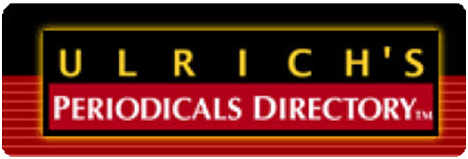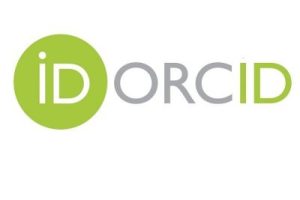ВИКОРИСТАННЯ ІКТ В НАВЧАННІ ОБДАРОВАНИХ СТУДЕНТІВ СПІЛКУВАННЮ АНГЛІЙСЬКОЮ МОВОЮ.
DOI:
https://doi.org/10.14308/ite000666Ключові слова:
обдаровані діти, зміст навчання, ІКТ, відео- та аудіоматеріали, технології проектів, авторські програмиАнотація
У статті аналізується методика навчання обдарованих студентів англійської діалогічної мови, зміна форми проведення уроків з урахуванням явища обдарованості та використанням ІКТ. Програма навчання діалогічної мови для талановитих студентів розроблена з урахуванням психологічних особливостей талановитих дітей, вікових особливостей, характеру та специфіки діалогу як типу мовленнєвої діяльності. Особливу увагу в дослідженні приділено використанню сучасних технологій (ІКТ). Експериментальна програма базується на концепціях комунікативного та пізнавального методів навчання англійської мови, дидактичних та методичних засадах викладання. Серед чотирьох основних принципів навчання англійської мови є комунікативна орієнтація; орієнтація на особистість; самоосвіта; комп'ютерно-інтегроване навчання для всіх видів розмовної діяльності (аудіювання, говоріння, читання та письмо) та нового принципу – культурологічний.
Система вправ включала в себе репродуктивні, репродуктивно-творчі, творчі (підготовчі, вступні, тренувальні, контрольні) вправи; вона була орієнтована на реалізацію всіх видів розмовної діяльності та заснована на репродуктивних і продуктивних засобах оволодіння знаннями, основна ціль якої є розвиток здібностей та навичок іншомовного спілкування старшокласників. Головна ідея нашої методики полягає у використанні аутентичного аудіо/відеоматеріалу в навчанні іноземної мови з огляду на все більший акцент на комунікативних техніках, і, як відомо, використання відео надає велику допомогу вчителям іноземних мов у стимулюванні та сприянні розвитку мовлення.
Завантаження
Показники метрики:
Посилання
1. Brian, K., Williams, S., Sawyer, S. & Hutchinson, E. (2000). Using information technology: a practical introduction to computer and communications. Boston: McGraw-Hill.
2. Grabe & Grabe. (2005). Integrating technology for meaningful learning. USA: Houghton Mifflin.
3. Davydov, V.V. (1991). Educational activity: the state and problems of research. Voprosy psychology, 6.
4. İsmail Сakir. (2006). The use of video as an audio-visual material in foreign language teaching classroom. The Turkish Online Journal of Educational Technology, vol. 5, Iss. 4. ISSN: 1303 6521.
5. Flecknoe, M. (2002). How can ICT help us to improve education? Innovations in education and teaching international, 39(4), 271-279.
6. Kazachiner, O.S. (2007). Organization of training gifted students. English language and literature. Osnova, 2, 2-5.
7. Komissarova, S., Vedmedenko. D., Bilogrina. M. (2006). Working with gifted children. Psycholog, 25-28, 57-65.
8. Krajka, J.G. (2002). “Using the Internet in the Language Classroom to Foster Learner Independence? Ideal and Reality”. Retrieved from http://www.iatefl.org.pl/tdal/n/krajka.htm.
9. Matyushkin, A.M., Yakovlev, E.L. (1991). Teacher for Gifted. Moscow.
10. Molyako, V.A. (1994). The problem of the psychology of creativity and the development of an approach to the study of talent. Voprosy psychology, 5, 86-95.
11. Rensulli, J.S. (1986). The Three-ring conception of giftedness. A developmental model for creative productivity. Sternberg, R.L.(Eds.). New York: Cambridge University Press.
12. Shatalov, V.F. (1989). The experiment continues. Moscow: Pedagogy.
13. Yankovchuk, M.M. (2008). Psychological organization of individual education and the education of gifted children. Practical Psychology and Social Work, 3, 63-65.
</uk>
<en>
1. Brian, K., Williams, S., Sawyer, S. & Hutchinson, E. (2000). Using information technology: a practical introduction to computer and communications. Boston: McGraw-Hill.
2. Grabe & Grabe. (2005). Integrating technology for meaningful learning. USA: Houghton Mifflin.
3. Davydov, V.V. (1991). Educational activity: the state and problems of research. Voprosy psychology, 6.
4. İsmail Сakir. (2006). The use of video as an audio-visual material in foreign language teaching classroom. The Turkish Online Journal of Educational Technology, vol. 5, Iss. 4. ISSN: 1303 6521.
5. Flecknoe, M. (2002). How can ICT help us to improve education? Innovations in education and teaching international, 39(4), 271-279.
6. Kazachiner, O.S. (2007). Organization of training gifted students. English language and literature. Osnova, 2, 2-5.
7. Komissarova, S., Vedmedenko. D., Bilogrina. M. (2006). Working with gifted children. Psycholog, 25-28, 57-65.
8. Krajka, J.G. (2002). “Using the Internet in the Language Classroom to Foster Learner Independence? Ideal and Reality”. Retrieved from http://www.iatefl.org.pl/tdal/n/krajka.htm.
9. Matyushkin, A.M., Yakovlev, E.L. (1991). Teacher for Gifted. Moscow.
10. Molyako, V.A. (1994). The problem of the psychology of creativity and the development of an approach to the study of talent. Voprosy psychology, 5, 86-95.
11. Rensulli, J.S. (1986). The Three-ring conception of giftedness. A developmental model for creative productivity. Sternberg, R.L.(Eds.). New York: Cambridge University Press.
12. Shatalov, V.F. (1989). The experiment continues. Moscow: Pedagogy.
13. Yankovchuk, M.M. (2008). Psychological organization of individual education and the education of gifted children. Practical Psychology and Social Work, 3, 63-65.
</en>
##submission.downloads##
Опубліковано
Як цитувати
Номер
Розділ
Ліцензія
This work is licensed under a Creative Commons Attribution-NonCommercial-ShareAlike 4.0 International License.





























